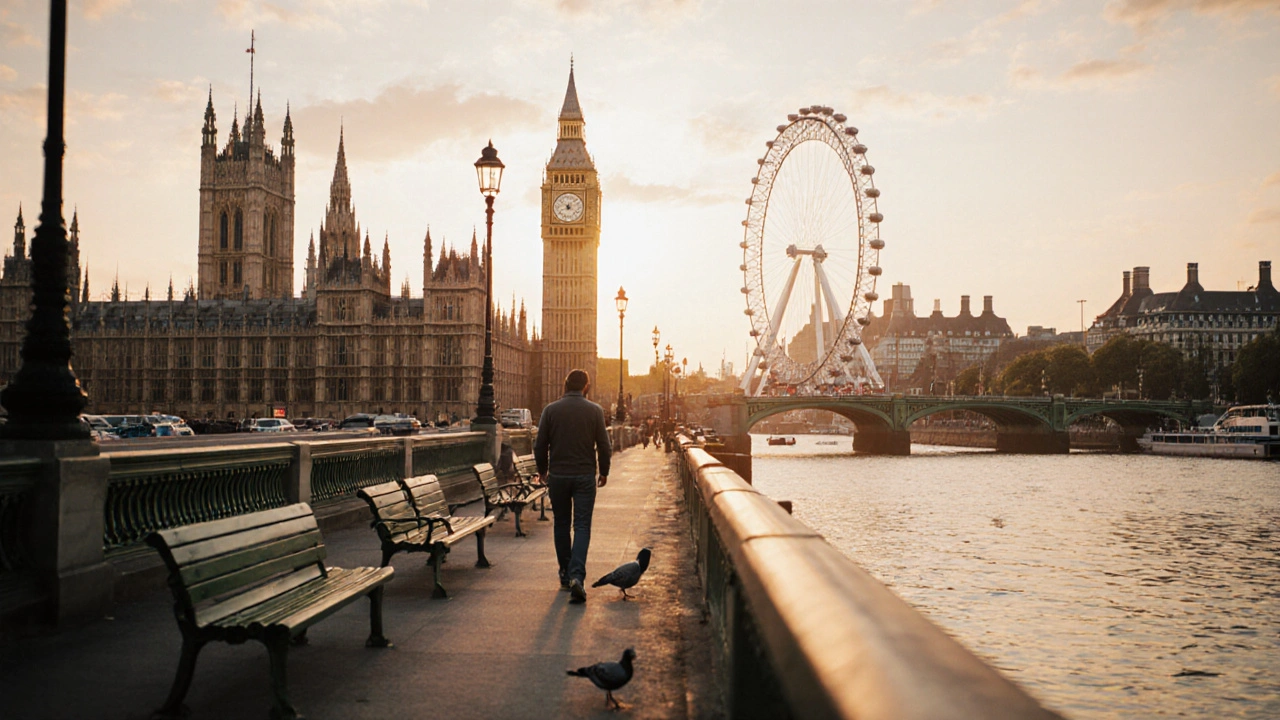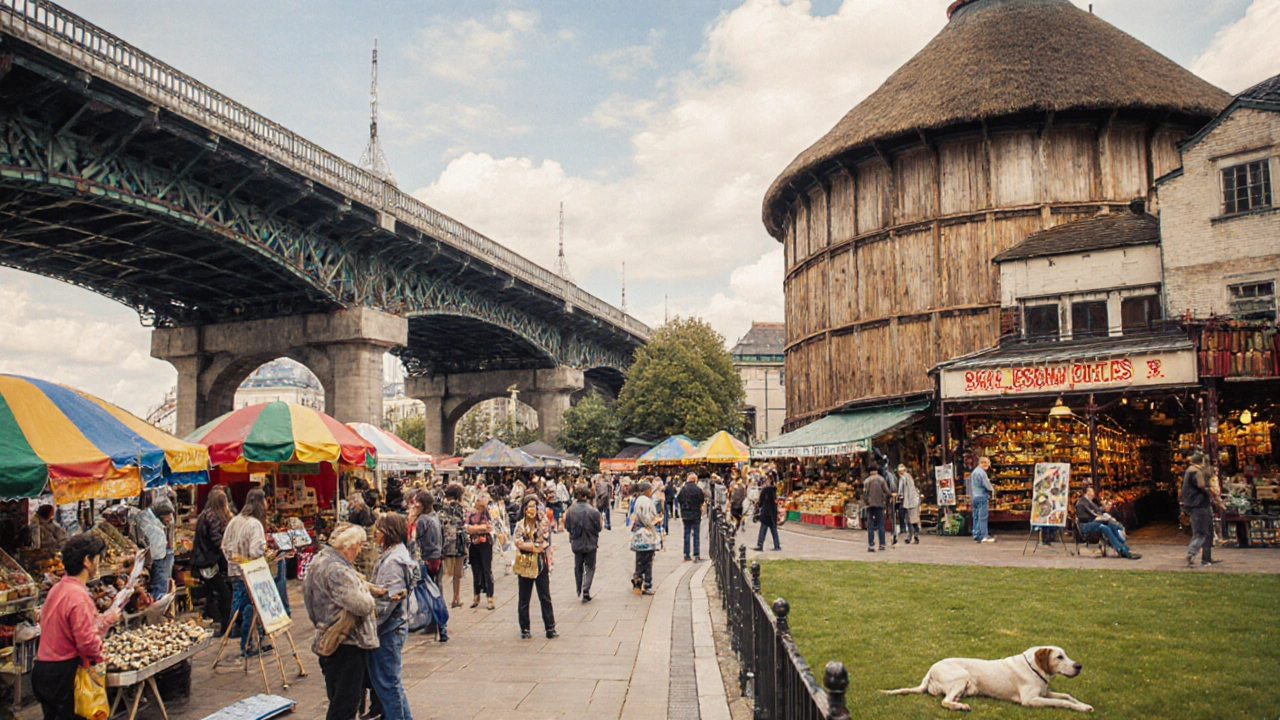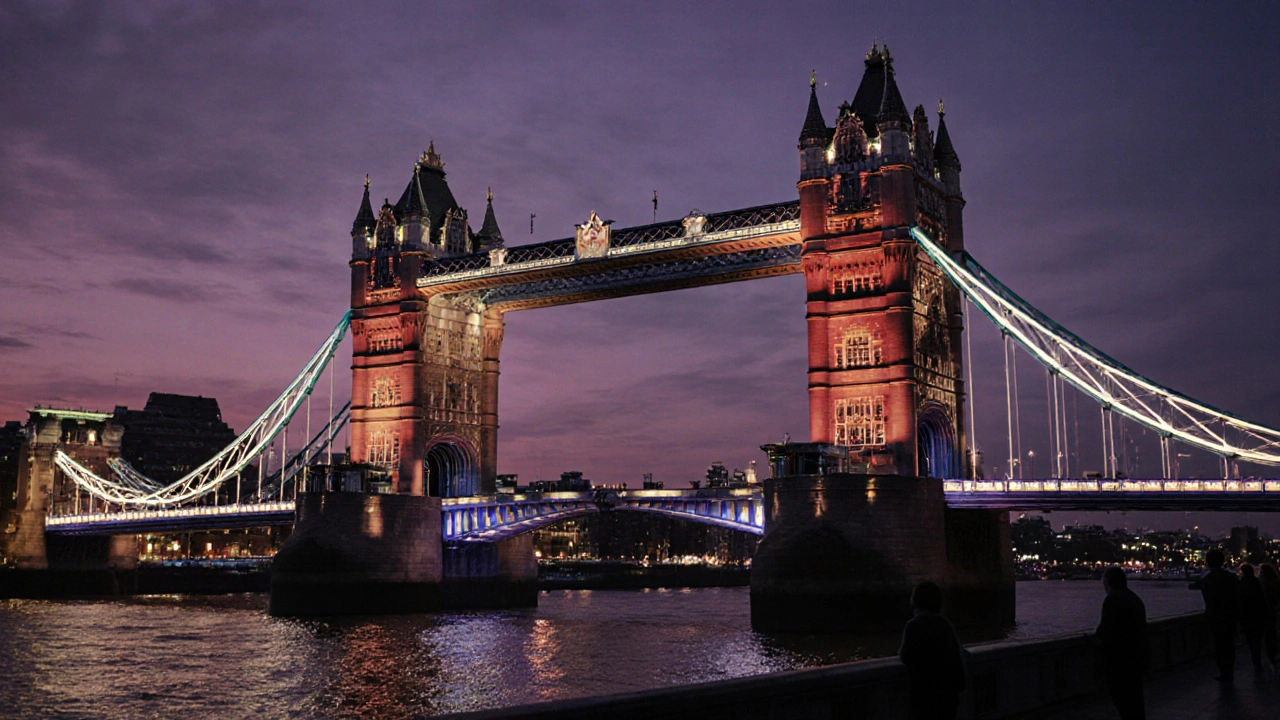
Walking from Westminster to Tower Bridge along the Thames is one of the most rewarding ways to see London. You don’t need a map, a tour guide, or even a plan-just good shoes and a few hours. The path hugs the river for nearly 3 miles, passing some of the city’s most iconic landmarks, hidden courtyards, and quiet spots where locals sip coffee away from the crowds. This isn’t just a walk. It’s a slow-motion tour through centuries of history, architecture, and everyday London life.
Start at Westminster Pier
Your journey begins right by Westminster Pier, where the river meets the Houses of Parliament. The Gothic towers of Big Ben rise above you, but don’t rush to take the postcard shot. Walk a little farther east along the Embankment, past the green benches where people read newspapers and pigeons wait for crumbs. You’ll spot the London Eye is a giant Ferris wheel on the south bank, opened in 2000 and now a defining symbol of modern London. It’s not the prettiest structure up close, but seeing it from the river path gives you a real sense of scale.
Just past the Eye, the path crosses under the Waterloo Bridge is a 1945 concrete bridge named after the Battle of Waterloo, with clean lines and no ornamental details. Keep walking. The river here is wide and calm, reflecting the sky. On a clear day, you’ll see the glass towers of the City shimmering in the distance.
Through Southwark: Shakespeare, Beer, and Borough Market
After crossing under Waterloo Bridge, you’ll reach the Southbank Centre is a major arts complex housing the Royal Festival Hall, Hayward Gallery, and Queen Elizabeth Hall. The walk here is lined with street performers, sketch artists, and food stalls. Stop for a coffee or a pasty if you’re hungry. This stretch is lively but never chaotic.
Just past the Southbank, the path turns slightly north toward Borough Market is a food market dating back to the 13th century, now famous for artisan cheese, fresh oysters, and spiced nuts. Even if you’re not buying, wander through the narrow alleys. The smell of roasting coffee and grilled cheese sandwiches will pull you in. Look up-you’ll see the brick arches of the old railway viaducts overhead. These were built in the 1860s to bring goods into the city. Now they carry foot traffic.
Turn back toward the river and you’ll find the Shakespeare’s Globe is a modern reconstruction of the original 1599 theatre where Shakespeare’s plays were first performed. The wooden structure looks like it stepped out of the 16th century. Take a quick peek inside if the doors are open. Sometimes they offer free tours or open-air performances in summer.
The Tower of London and the Tower Bridge Approach
As you keep walking east, the river bends. The skyline changes. The glass towers give way to stone walls and battlements. That’s when you spot the Tower of London is a historic castle founded in 1078 by William the Conqueror, now home to the Crown Jewels and centuries of royal history. It’s not just a building-it’s a fortress. Walk right up to the water’s edge and look at its moat. You can still see the old drawbridge foundations. The red-brick walls are covered in ivy, and the Beefeaters in their uniforms stand guard like living statues.
Just beyond the Tower, the path narrows slightly. This is where the crowds thin out. Locals know this stretch. You’ll see people fishing from the banks, dogs napping on the grass, and cyclists whizzing past on the dedicated path. The air smells like wet stone and saltwater.
Then you see it: Tower Bridge is a combined bascule and suspension bridge built in 1894, designed to let tall ships pass while keeping road traffic flowing. It’s not just a bridge-it’s a machine. The two towers rise 213 feet above the river. The walkway between them, called the High Level Walkways is glass-floored pedestrian bridges built in 1894, offering panoramic views of the river and city, used to be a public passage for pedestrians when the bridge opened. Today, you can pay to walk across them. But you don’t have to. The ground-level view is just as powerful.
Stand on the pavement near the south tower and watch the bridge lift. It doesn’t happen every day, but if you’re lucky, you’ll see two massive steel arms rise slowly, like a giant’s arms opening. Ships-cargo boats, tour vessels, even yachts-glide through. The sound of the hydraulic system is low and mechanical, like a slow heartbeat.

What You’ll See Along the Way
This walk isn’t just about the big names. It’s about the small things too:
- St. Thomas’ Hospital - The old building with the curved windows where Florence Nightingale trained nurses.
- The Clink Prison Museum - A tiny museum tucked behind a pub, telling the story of medieval prisons.
- Harrods Furniture Depository - A grand 19th-century warehouse turned art space, with a red-brick facade you can’t miss.
- The Thames Path signposts - Bright blue signs with white arrows. They’re everywhere. Follow them. They never lie.
- Public art - Look for the bronze statues of children playing by the river near City Hall, or the floating sculptures that appear in summer.
When to Go
The best time to walk this route is late morning or early afternoon. The sun hits the river just right, and the crowds haven’t peaked yet. Avoid weekends if you can-Borough Market gets packed, and the path near Tower Bridge fills with tour groups.
Spring and autumn are ideal. The weather is cool, the light is golden, and the trees along the path turn red and gold. In winter, the air is crisp and the river looks like liquid mercury. Summer brings long days, but also heat and tourists. If you go in July, bring water and wear a hat.
Check the Tower Bridge lift schedule is available online, showing daily times when the bridge opens for vessels, usually around 10:00, 12:00, and 15:00. If you time your walk right, you’ll see the bridge in motion.

How Long Does It Take?
At a steady pace, you can walk from Westminster to Tower Bridge in about 1 hour 15 minutes. But no one does it that fast. Most people take 2 to 3 hours, stopping for photos, coffee, or just to sit on a bench and watch the boats.
If you want to stretch it out, add a detour to City Hall is the glass dome building that once housed the Greater London Authority, designed by Norman Foster and opened in 2002. The free rooftop terrace offers one of the best views of the entire route. You can see all the way back to Westminster.
What to Bring
- Comfortable walking shoes-the path is paved, but some sections are uneven.
- A light jacket-even in summer, the river wind picks up.
- A bottle of water-there are fountains at Westminster and Tower Bridge, but not much in between.
- A camera or phone-this route is photogenic from every angle.
- A small snack-Borough Market has plenty, but it’s pricier than a supermarket.
Getting There and Back
You can start at Westminster Station (Jubilee or Circle lines) or take the 11, 15, or 211 bus to Westminster Pier. To get back, take the District or Circle line from Tower Hill Station. Or, if you’re feeling adventurous, walk back the same way-it’s even better in the evening when the landmarks are lit up.
There’s no need to rush. This walk isn’t a race. It’s a conversation with the city.
Is the Thames River Walk safe?
Yes, it’s very safe. The path is well-lit, heavily used, and patrolled by police on bikes and foot. Stick to the official Thames Path, avoid shortcuts through alleys after dark, and keep your belongings close. It’s one of the most popular walking routes in London for a reason.
Can I bring my dog?
Absolutely. Dogs are welcome on the path, and many locals walk theirs here daily. Just keep them on a leash near busy spots like Borough Market and Tower Bridge. There are water bowls at several cafes along the route.
Are there public toilets along the route?
Yes, but they’re not always open. The best ones are at Westminster Pier, near the London Eye, and at Tower Bridge. Some are free, others cost 50p. Bring small change.
Do I need to pay to walk across Tower Bridge?
No. Walking along the river path at ground level is completely free. You only pay if you want to go up to the High Level Walkways inside the bridge towers. That’s optional.
What’s the best spot for photos?
Three spots stand out: the view of Big Ben from the south bank near Lambeth Bridge, the reflection of Tower Bridge in the river at low tide, and the skyline from the City Hall rooftop. For sunset, head to the bench near the Tate Modern steps.